How to install a sliding patio door
Let light flood into your home and create a seamless transition to outdoors by installing sliding patio doors. It can be fiddly, but is in the grasps of most competent DIYers

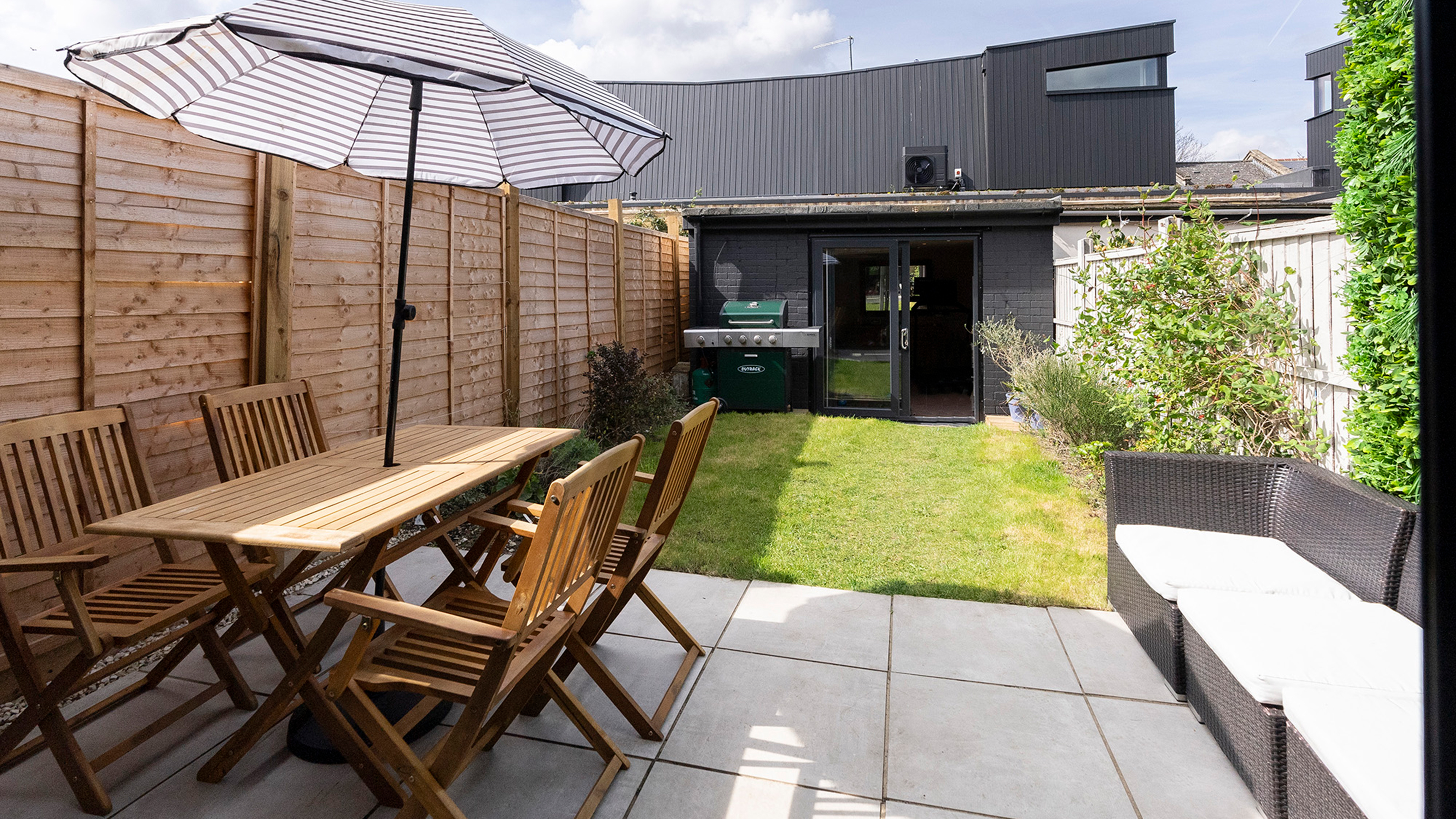
Installing a sliding patio door in your home is an amazing way to fill your house or outdoor office with sunlight and help bring the outside in.
Though it can be a fiddly job, it’s definitely achievable, especially if you’re already a handy person and confident at DIY – perhaps you have hung a door before. If you’re installing internal sliding doors, you have a little more room for error; even if something doesn’t hang quite straight, whilst it will be annoying it won’t impact home security.
External doors are another story though and you need to get everything right to avoid damp, draughts, and the risk of break-ins. Do consider where you’re installing the doors too – it’s advisable not to install them at the front of the house as it may make you more susceptible to burglaries. They are however a great addition to space for that seamless outdoor-indoor living vibe.
Follow these steps below to install your sliding doors and let the light flood in!
Difficulty: Medium, fiddly and you’ll need two of you so rope in a patient buddy
Approximate cost: Varies based on the material (wood, aluminum, uPVC) and whether they’re prehung. Here we’ve used a pre-hung uPVC door which you can expect to pay anything from $1,000 upwards for (or from around £700 in the UK). They’re the easiest to install because they go in as a single unit. You won’t need to assemble the frame before installing it on your wall.
Time: Leave aside an afternoon
Get small space home decor ideas, celeb inspiration, DIY tips and more, straight to your inbox!
Before
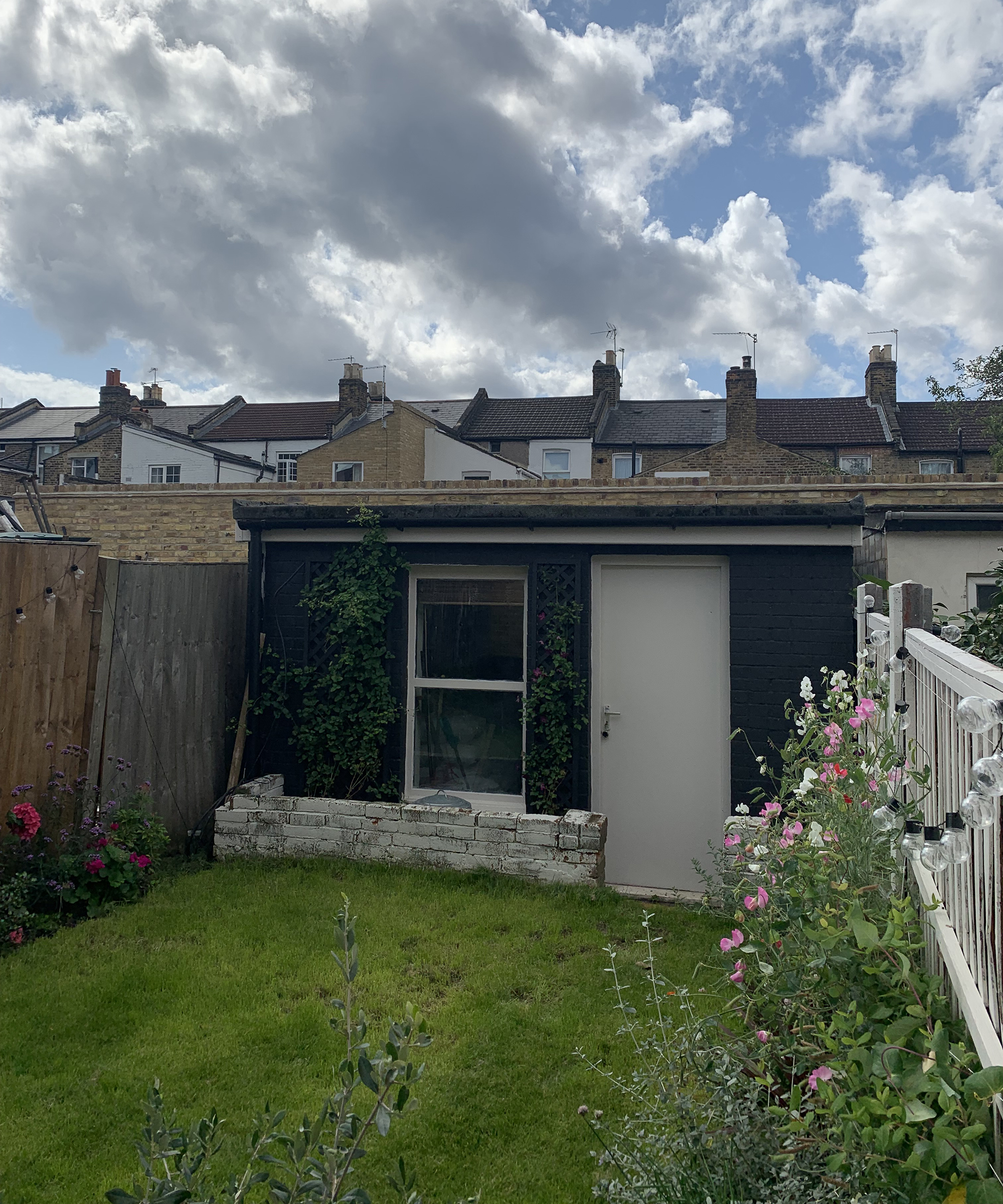
We have an outbuilding that has been converted into a garden office. We wanted to make the space more enjoyable, by increasing natural light.
Preparing to install the doors
When shopping for the doors you need to know the exact size of the opening that the door needs to fill. If you’re creating this opening (per step 1, below) then you have more flexibility in choosing the doors, if there is already an opening then use a tape measure to measure the full width of the hole. Measure from stud to stud.
- Measure both the width and height of the opening. Write down these measurements so you can refer to them when shopping for a door.
- Before you measure, make sure to remove any boards or shims that may have been added to make the old door fit.
How to install a sliding door
You can purchase a sliding glass door either online (check the reviews) or from a home-supply store such as Home Depot, if you go to the store then be sure to bring your tape measure with you.
Shopping list:
1. Sliding doors: (we suggest buying those that come prebuilt with the frame and doors as one, they are easiest to install)
2. Tape measure
3. A pencil
4. A sledgehammer (if removing any wall for the door to be installed)
5. A crowbar (if removing an existing door)
6. A screwdriver
7. A spirit level
8. A dustpan and brush
9. 1 x 3 centimeter plywood as needed to infill the space for the doors
10. Nails
11. Flashing tape
12. Screws (per the manufacturer's instructions)
13. Fiberglass installation: (optional if there are gaps from fitting the door)
14. Waterproof sealant
1. Prepare the space for the door

Make the space for the door in the wall or remove the old door. If you’re creating a space from a wall then you will need to remove bricks or breeze blocks using a drill and sledgehammer and then infill any brickwork as needed, ensuring the hole is as near as possible to the size of the desired doors (we will cover any minor adjustments needed in further steps).
If you’re removing an old door, remove the adjustment screws on the bottom of the door, raise the door rollers and ease the door out by tilting it forward and slipping it out. Once it’s out, take out the frame, using a crowbar to prise it from the hole.
2. Clear up the space and ensure the gap is accurate

You’re likely to have a bunch of nails, screws, and dirt in the space if you’ve removed a door or created a new space for one so you need to clean up and adjust the opening. That means getting rid of any leftover nails or torn material. You may also need to adjust the opening if it’s not quite the right size.
Use a spirit level to make sure that the top, bottom, and side frames of the opening area are all level. If any aren’t level, you can use a shim (a thin piece of wood) to even out the door frame. If the frame is slightly too large for the sliding door you purchased, nail in one or more strips of 1 x 3 centimeter plywood to adjust the size of the opening to the correct size.
3. Make watertight and install the door
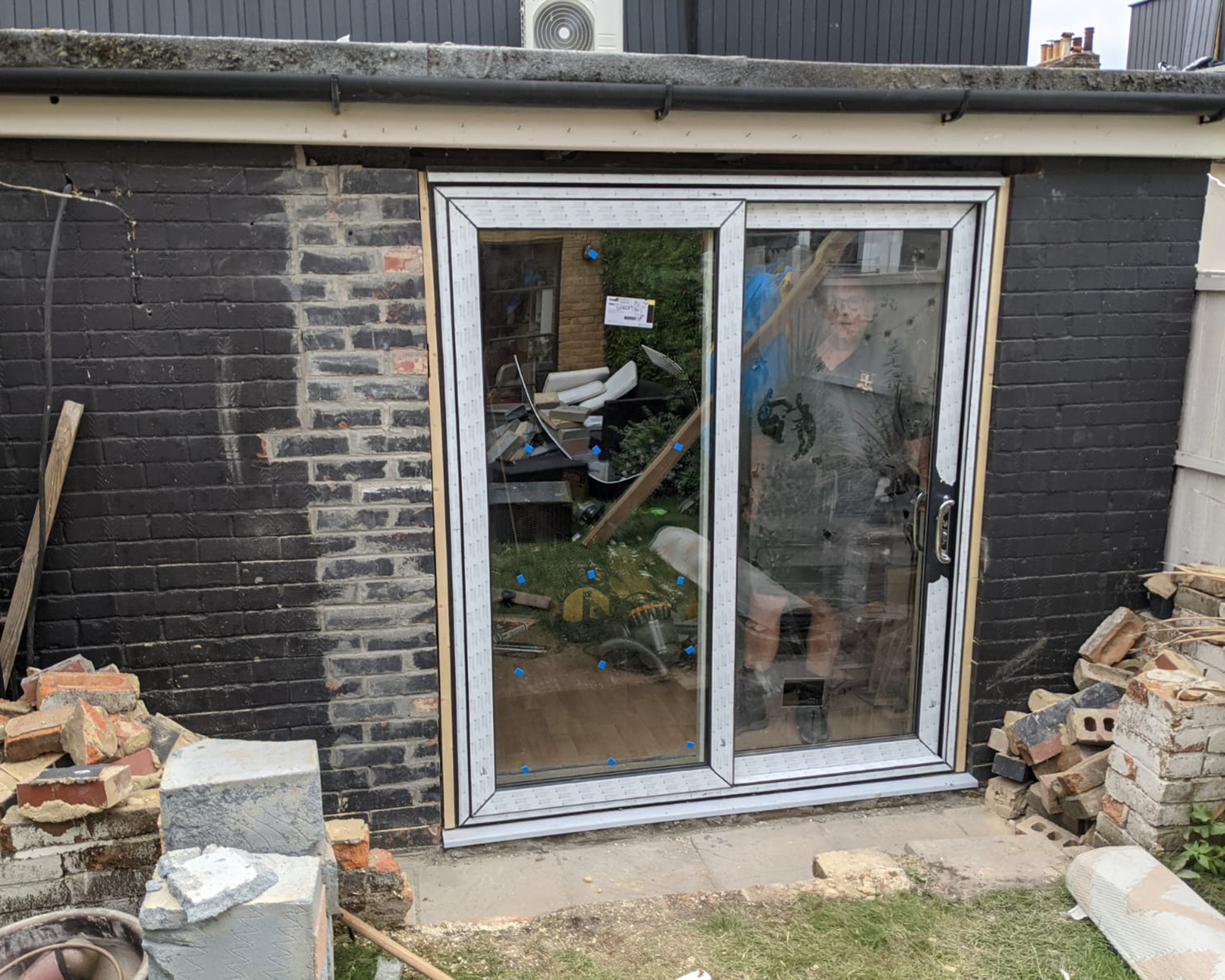
Add flashing to protect from water damage before installing the door. Flashing is a type of adhesive, waterproof tape that will protect the door frame and lower edges of the sliding glass door from water damage and stop water seeping through the edges of the door.
Apply a layer along the bottom sill of the door frame, letting the tape hang over the outer edge of the frame so you can bend the tape over and press it down on the external side then apply around 40 centimeters up each side from the floor up. Installing the door is a two person job; get a buddy to help you lift and carry the door inside the house and push it into position in the large opening. Make sure you position it the right way around so you don’t install it backwards, check that the lock is on the correct side.
Use a spirit level to check it is perfectly straight, this is the most important step in the process! Once you’re sure everything is level then screw the frame in place as per the manufacturer’s instructions, ensuring that you check where the screws need to be before fixing everything down. If you do have any gaps you’re worried about, you can put some fiberglass insulation into these spaces. This will prevent your house from losing heat around the frame.
4. Seal the door and remove protective covering
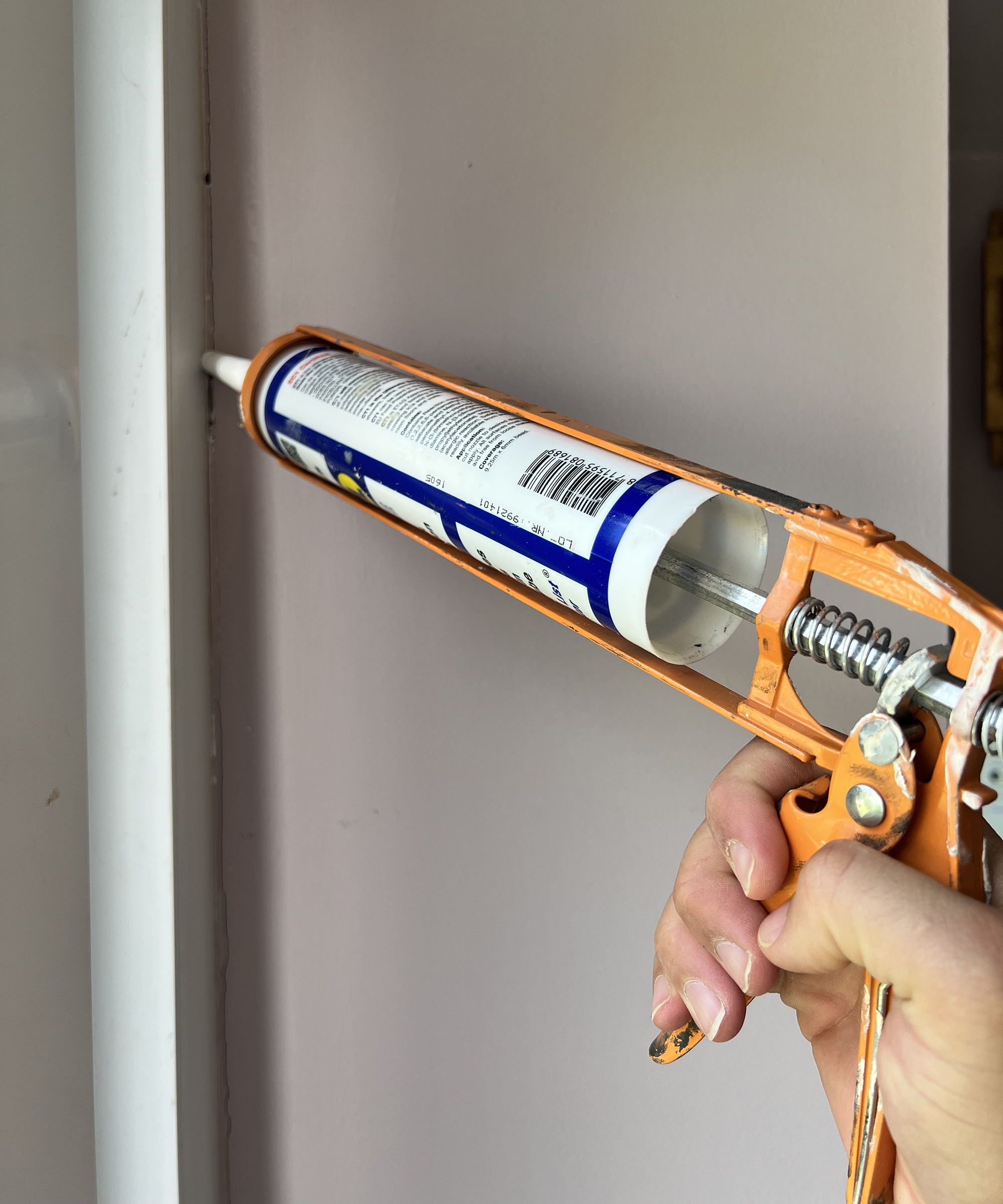
Use a waterproof sealant around the sides to ward off any water that might sneak in around the door frame. Double-check for holes, cracks, or gaps and make sure it is totally draught, and waterproof. Once this is dry you should be good to go! Remove any protective tape or coverings and dress the area with curtains, blinds or any door furniture then sit back and enjoy!
After
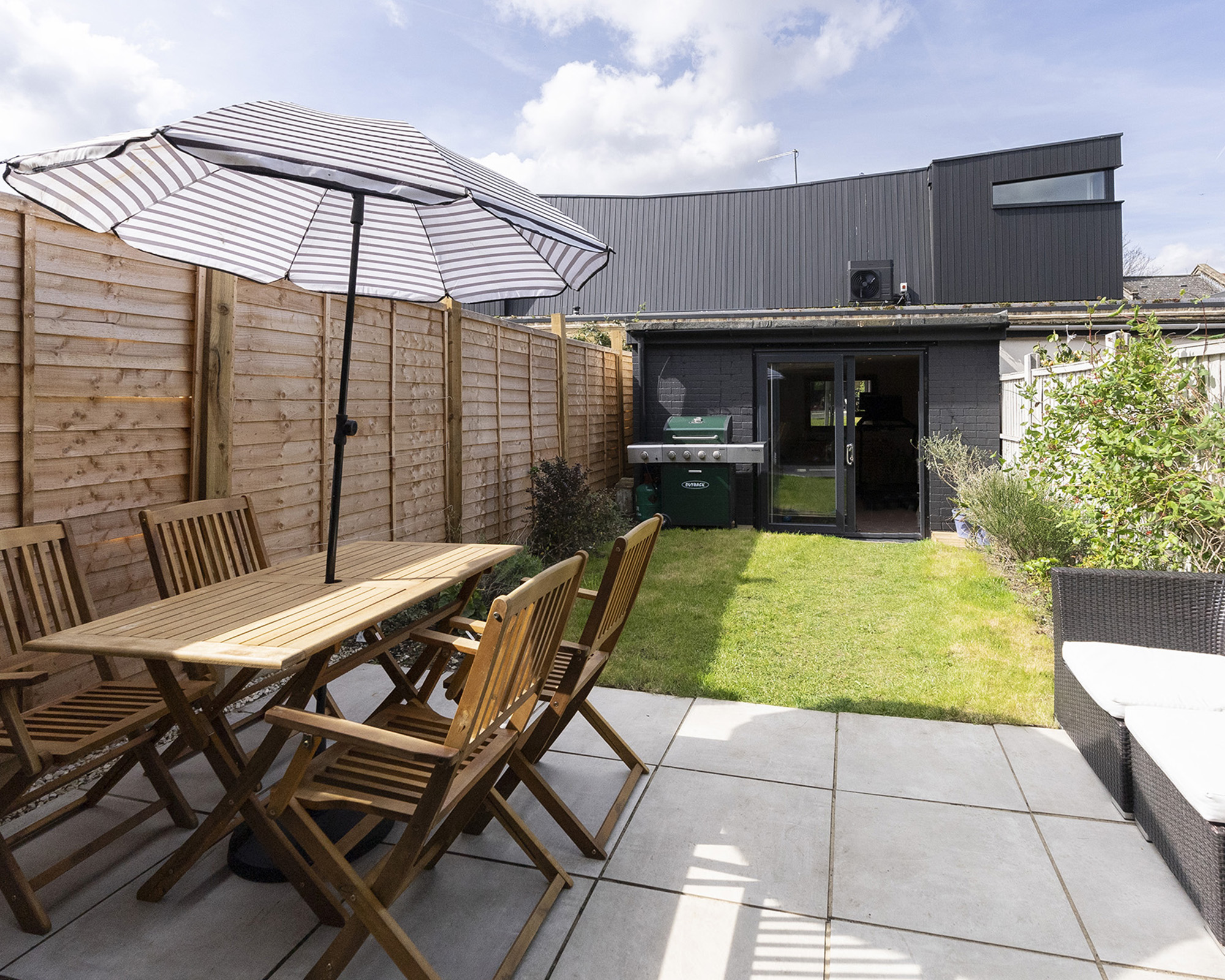
We chose black door frames to match the black brick of our outbuilding. We now get plenty of light in the space and can open it to the outside on warm days for a cool breeze.
Do sliding patio doors slide inside or outside
This type of patio door should always be fitted so that the door slides to the inside of the fixed frame. The doors are designed this way so they are more secure.
When you have finished installing your doors, take this sliding element into account before placing furniture. The doors won't protrude far into the room, but you can't put any furniture too close to the mechanisms or you won't be able to open them. Still, they are a good option where space is tight, as you don't have to allow for them opening.

I’m a DIY and renovation expert from a family of renovators; it's in my blood! Renovation is my passion and I love sharing my knowledge, either through my Instagram renovation tips or my renovation course. I love seeing how it helps others build the confidence to create their dream home without it costing the earth!